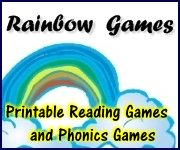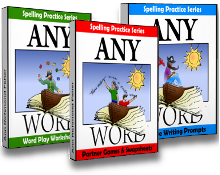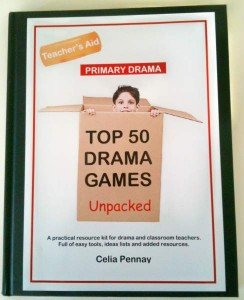Sentence Fluency
Create Melody, Harmony, and Rhythm in Sentences
Sentence fluency is to writers what melody, harmony, and rhythm are to musicians. Teach your students to turn words and phrases into sentences that sound fabulous to the ear!As part of the six trait writing process, working with sentence fluency is one of the most delightful, engaging writing traits. Try these creative writing tips for guiding your class in selecting proper word choices for perfect phrases, and then drafting those phrases into- presto! -sentences that sound wonderful when read aloud.
 As a teacher and tutor, I sometimes ask my students to memorize expertly written passages from children's literature, reciting them expressively so that the kids absorb the sounds of the language. My students often learn the rhythms of sentence fluency and use those rhythms as they write.
As a teacher and tutor, I sometimes ask my students to memorize expertly written passages from children's literature, reciting them expressively so that the kids absorb the sounds of the language. My students often learn the rhythms of sentence fluency and use those rhythms as they write.
Before we explore several hands-on activities that assist children in writing well-organized, musical-to-the-ear sentences, here are two general tips to keep in mind:
- Immerse your class in poetry. Poetry helps writers learn how to compose rhythmical language. Visit these pages, writing poems and teaching children to write poetry, for adding exciting, engaging poetry lessons to your curriculum.
- Read, read, read to your classes. Then read some more! I've found that there really is no better way to learn how to write well than by hearing fluent language read aloud.
Sentence Fluency: Beginning Sentences in Various Ways
Let's explore a few enjoyable activities designed to teach kids to open sentences with variety and punch! Roll the Dice! This is one of my favorite, fun lessons to help my students think of fresh, inventive ways to begin sentences! You simply need a topic, a six-sided die, and an overhead projector and pens. You'll build the story by writing sentences in a variety of lengths with a variety of beginnings, all determined by the roll of a die!
Roll the Dice! This is one of my favorite, fun lessons to help my students think of fresh, inventive ways to begin sentences! You simply need a topic, a six-sided die, and an overhead projector and pens. You'll build the story by writing sentences in a variety of lengths with a variety of beginnings, all determined by the roll of a die!
First, ask your class to determine an imaginative topic for writing, such as "a mysterious Christmas Eve." Then, roll the die, and have your students create an opening phrase with as many words. For example, if you roll a four, they may suggest, "As the snow fell, we drove home from a late Christmas Eve service."
Roll the die again, and ask your class to compose a second opening phrase with as many words. Suppose you roll a six. Your students may suggest, "When we pulled into the driveway, we noticed a plain brown box waiting on our front porch."
Continue rolling the die and writing new sentences with different beginnings, until you and your students feel the piece is finished. Roughly eight to ten sentences should be enough.
Now read the entire story aloud, revising as you and your kids see fit, discussing the importance of writing sentences with different opening phrases.
Color, Color Everywhere! Using a favorite fluently written chapter book, select a paragraph, and retype it, making an overhead transparency. Highlight the first word of every sentence in a different color. Have your students study the model and tell you how many colors they see, as well as how many different ways the author opens sentences. Now ask your class to use color to highlight the first word of each sentence in pieces of their own writing. Too much of the same color suggests specific sentences for revision. Using color this way helps your students pinpoint problem areas.
Sentence Fluency: Composing Sentences of Different Lengths
We're all familiar with the tale of Goldilocks. Our protagonist declared, "This bowl of porridge is too hot. This one is too cold. But this one is just right." Sentences can be the same: too long, too short, or just right. It's this skill of sensing how much is enough that we seek to develop in our student writers.One of the best things you can do to develop that skill of sentence fluency is to require your students to write across the curriculum. By writing complete sentences when answering content area questions, kids will be in better position to reduce and expand sentences within creative writing topics.
Learning to combine sentences of different lengths is key to creating fluent text. Here are several of my favorite activities to help my students develop this aspect of sentence fluency. Try them and see what you think!
Standing Sentences. For your kinesthetic learners, this is an engaging lesson plan that helps students create a variety of sentences using word cards, dramatic play, and creative imagination.
Using a basic sentence such as "My cat is gray", write each word on a separate card. Give each card to a different student and ask them to create the sentence by lining up in the proper order, word cards facing out.
Create additional word cards to expand the basic sentence. "Silky" or "shy" can modify "cat", for example. Give the cards to other students, asking them to weave the words into the basic sentence, standing where they think their words would go.
Add as many words as you wish, allowing your students to make the best sentences possible. Repeat this activity regularly, using new, interesting words to help your class learn to write sentences of various lengths.
Finding Fluent Sentences. Type a paragraph of at least six to eight sentences from a favorite read-aloud book. Make an overhead transparency and then highlight each sentence a different color to visibly display the varying lengths of each sentence. Ask your class to count the number and words in each sentence. Read the paragraph aloud, asking your students to listen for how sentence fluency affects the sound of a piece.
Sentence Fluency: Listening for a Lyrical Sound
Through reading aloud, writers discover rhythm, cadence, and the flow of language. Read passages from loved books to give your students an idea of what to work toward in their own writing. As children listen to and luxuriate in the language of fluently written books, they internalize the authors' syntax and begin to replicate it.You can help your students read their pieces aloud independently by giving them whisper phones. These are sound-amplifying devices made from curved pieces of PCV pipe, available at home-improvement stores. Kids read their writing into one end of the phone, listening to it from the other. Even the most soft-spoken child can hear how his or her writing sounds, revising as necessary, using these simple, clever little devices.
Here are a few activities that will help your students develop an "ear" for sentence fluency. Enjoy trying them out with your class.
Sentence Detectives. Locate a few fluently-written paragraphs and transcribe them, removing all capital letters and punctuation marks. Make overhead transparencies and ask your class to attempt reading the paragraphs aloud. Expect quite a bit of stumbling and stuttering! Then ask your students to help you add proper capitalization and punctuation, creating smooth, easy-on-the-ear sentences. Discuss the cooncetion between writing conventions and sentence fluency.
Sentence Treasure Hunt. Ask your students to look through their favorite novels or picture books for sentences they love. Write them neatly on sentence strips (with the book titles at the bottom of the strips), and display the strips in a colorful wall display or bulletin board. Spend time having students read their selected sentences aloud to classmates, explaining the reasons behind their choices.
As readers and writers, we love the sound of language. When we share words, phrases, and sentences aloud, we open the doors to sentence fluency. Our students write words, phrases, and sentences of their own that are lyrical to the ear. To craft lovely sentences, however, our kids must also understand and apply writing conventions covered in this article.
Return from Sentence Fluency to Creative Writing Tips
Return from Sentence Fluency to Creative Writing Ideas and Activities
Helping You Write Across the Curriculum!
copyright 2009-2013 www.creative-writing-ideas-and-activities.com
Our Most Popular Pages
5. Writing a Personal Narritive
10. Elements of Persuasive Writing
Recommeded Resources:
AnyWord(TM) Spelling Practice Series!
Worksheets, games and activities to use with any spelling words. Three volumes in all!
Stop Essay Pain!
LitWorks.com
Resources to help students prepare for literature examinations.
Teach Kids Drama!








